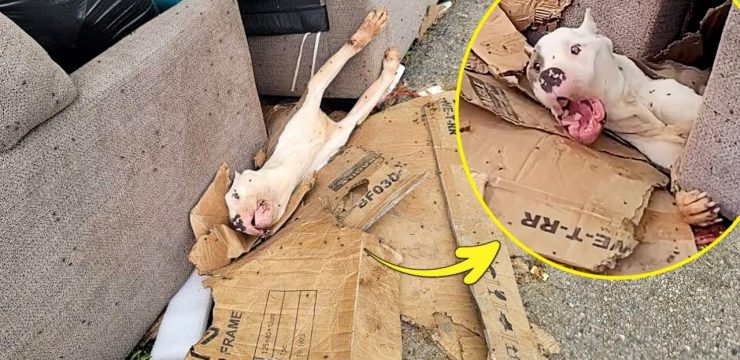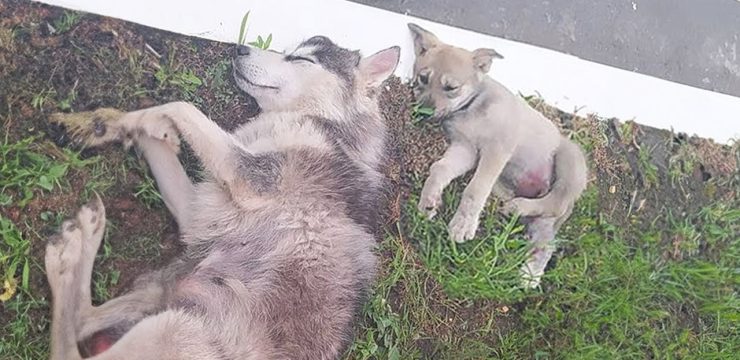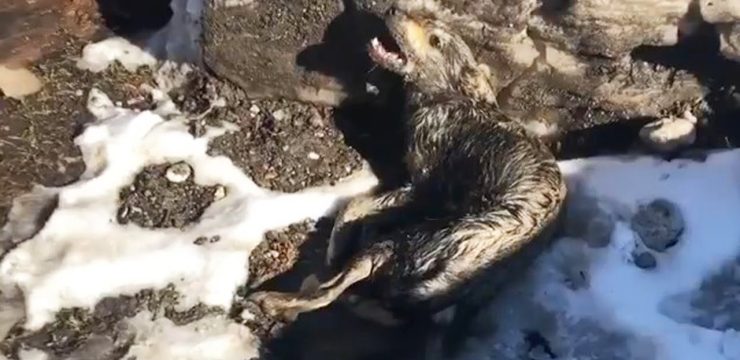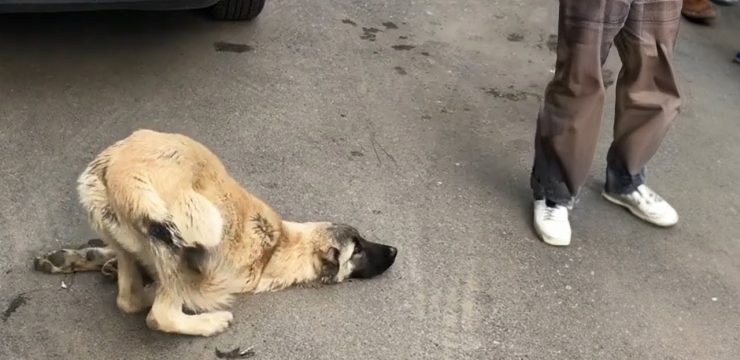In Currumbin Valley, a tranquil region in Queensland, Australia, something unexpected and unsettling recently occurred. A car owner, going about their normal routine, suddenly noticed a large animal slipping quietly into their vehicle. At first glance, the creature’s movements were subtle—but clearly not those of a domestic animal or something easily dismissed. Alarmed by what was unfolding before their eyes, the owner realized they were dealing with something far beyond their capabilities. Without hesitation, they made the smart decision to call in the professionals, reaching out to WIRES Wildlife Rescue—a trusted organization known for its compassionate and efficient handling of Australia’s diverse wildlife.
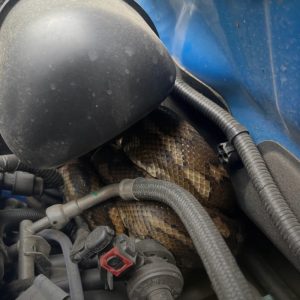
As it turned out, the mysterious intruder wasn’t just any animal. Coiled deep inside the vehicle’s engine was a coastal carpet python—a native species renowned across Southern Queensland. These pythons are striking in both size and appearance. Known to weigh up to 22 pounds, they are among the largest snakes found along Australia’s eastern coast. Despite their intimidating size, carpet pythons are non-venomous and play an important role in the ecosystem by helping control rodent populations. Nonetheless, finding one nestled inside the engine of your car can be an unnerving experience for even the most seasoned nature lover.
WIRES quickly dispatched Amy, one of their experienced emergency responders. With her training and calm demeanor, Amy knew exactly what to do. She arrived promptly, bringing with her not only the necessary equipment but also the sensitivity and understanding required when dealing with wild animals in unusual and potentially dangerous situations. Carefully approaching the vehicle, she opened the hood and began scanning for the python. Soon, she spotted the snake, partially hidden yet unmistakably coiled within the engine compartment.
Fortunately, the snake was not too deeply embedded in the engine. “Luckily, it was close to the top,” Amy explained during an interview with The Dodo. She was able to reach the animal safely without having to dismantle any part of the vehicle. Demonstrating incredible patience and skill, she gently began to coax the snake out. “I was able to secure the snake and gently tickled it to encourage it to move,” she added. Her approach avoided causing the animal stress, which could have led to erratic movements or injury.
Once fully extracted, Amy took a moment to examine the python’s condition. Engine bays are not exactly welcoming environments—hot surfaces, cramped spaces, and moving parts can pose serious risks. Yet, despite the snake’s dangerous hiding spot, it seemed to have emerged unscathed. Its scales were smooth and intact, showing no signs of damage or trauma. The snake, although undoubtedly confused, was healthy and alert.
WIRES shared the rescue story in a Facebook post, celebrating the successful outcome. “Thankfully, the snake was unharmed, with its beautiful scales completely intact!” they wrote, highlighting not only Amy’s professionalism but also the importance of public awareness and quick action in such scenarios.
With the immediate danger averted and the snake’s condition verified, Amy made the thoughtful decision to release the animal back into a natural setting. She selected a bushland area close to where the snake had been found. This ensured that the python would return to familiar territory, increasing its chances of resuming normal behavior and avoiding disorientation.
As the snake slithered off into the undergrowth, Amy watched with a quiet sense of fulfillment. These moments—when wildlife is returned to its rightful place—are what make her work so meaningful. “It was a happy moment for me to see a healthy animal make its way back into the bushland and \[to know] that people \[wanted] to help the snake,” she reflected. “It’s refreshing when people care so much.”
Indeed, this rescue highlights more than just the safe removal of an animal from a car. It represents a growing awareness among communities about the need to protect and coexist with native wildlife. Rather than reacting with fear or aggression, the car owner chose compassion and responsibility. By calling WIRES, they set in motion a chain of events that led to a peaceful and positive outcome for both human and snake.
Australia is home to an incredible range of reptilian species, many of which, like the coastal carpet python, are misunderstood. While it’s natural to feel uneasy about such creatures, education and exposure can help shift perceptions. Organizations like WIRES are instrumental in this transformation. They don’t just remove animals from precarious situations—they help bridge the gap between people and wildlife, fostering a culture of respect and coexistence.
This incident also serves as a reminder for vehicle owners—especially in regions like Queensland where snakes are common—to be vigilant during warmer months. Snakes often seek warm and shaded areas, and car engines can seem like inviting shelters. Before starting your engine, a quick check around and under the vehicle can prevent dangerous encounters and, in some cases, save a life.
For Amy, the outcome of this rescue was just another day on the job—but it was also a deeply satisfying one. Every animal saved, every life protected, and every person educated adds to the collective effort of preserving Australia’s natural heritage. The image of the python disappearing quietly into the wild isn’t just the end of this story—it’s a symbol of hope and harmony, showing that with a little care and the right help, humans and wildlife can thrive together.
